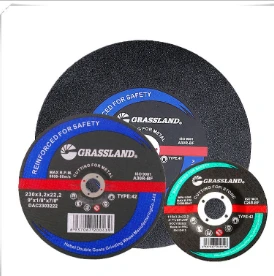

Maintaining control over the tool is paramount. For long cuts, make sure to follow a marked line closely to avoid veering off course. For thicker metal, make multiple shallow passes instead of trying to cut through in one go. This method reduces heat buildup, preserving both the material’s integrity and the lifespan of the disc. Regular maintenance and inspection of your angle grinder and its discs are critical. Before use, check the integrity of the disc, looking for any cracks or signs of wear, which could lead to disc failure. Ensure the grinder’s guard is in place and functional, as it provides a critical barrier against debris. Routine checks of the electric cable and plug are also necessary to prevent electrical hazards. Post-cutting, metal edges can be sharp and dangerous. It’s best to use a file or a deburring tool to smooth any rough edges. This not only enhances the safety of the worked piece but also contributes to a professional finish that reflects the user’s expertise. Lastly, gaining expertise in metallurgy can elevate one’s metal-cutting prowess. Different metals respond diversely to cutting steel is dense and demands continuity in pressure and speed; aluminum, being softer, can clog discs if cut too rapidly. Understanding these characteristics can inform better technique and tool choice, underscoring the authority and trustworthiness of one’s workmanship. Incorporating these best practices into your cutting routine can transform an otherwise daunting task into a straightforward and rewarding undertaking. Mastery of metal cutting with an angle grinder reflects not just technical ability, but also a commitment to safety and craftsmanship, hallmarks of a true expert in the field.
Post time:Jan - 26 - 2025

















